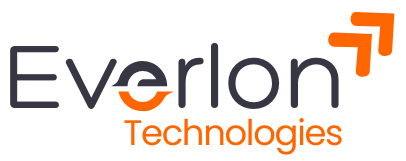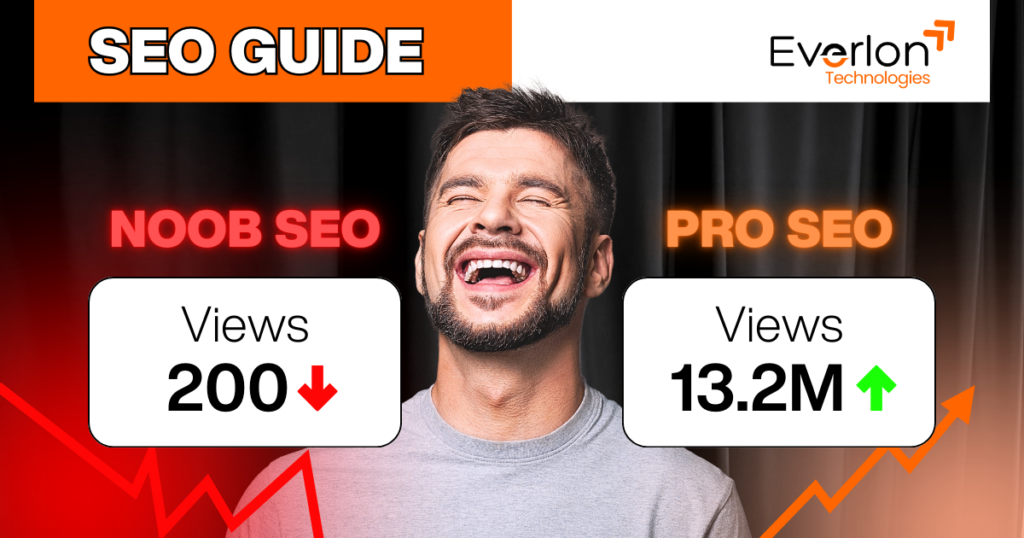
What Is On-Page SEO? A Complete Guide with Examples and Pro Tips
Outline
H1: What is On-Page SEO?
H2: Why On-Page SEO Matters More Than Ever
-
H3: Impact on Search Rankings
-
H3: Relevance and User Intent
-
H3: Better Click-Through Rates (CTR)
H2: Key Elements of On-Page SEO
-
H3: Title Tags
-
H3: Meta Descriptions
-
H3: Headings (H1–H6)
-
H3: Content Optimization
-
H3: Internal Linking
-
H3: Image SEO
-
H3: URL Structure
-
H3: Mobile Friendliness and Page Speed
H2: Perfect SEO Title Formula
-
H3: Why Titles Matter for SEO
-
H3: Proven Title Tag Formula
-
H4: Example: “Best On-Page SEO Tips | Boost Rankings Fast | YourBrand”
-
H3: Emotional Triggers That Work
H2: How to Write Meta Descriptions That Get Clicks
-
H3: Good vs. Bad Meta Descriptions (Examples)
-
H3: Quick Tips for Writing Better Meta Descriptions
-
H3: Tools to Generate Meta Descriptions
H2: Content is Still King
-
H3: Keyword Placement and Density
-
H3: Using LSI Keywords Naturally
-
H3: Writing for People, Optimizing for Search Engines
-
H3: Word Count, Structure, and Formatting
H2: Internal Linking Strategies
-
H3: Anchor Text Best Practices
-
H3: Building a Topic Cluster
-
H3: Avoiding Over-Optimization
H2: Image Optimization
-
H3: Using ALT Tags Effectively
-
H3: Compressing Images Without Losing Quality
-
H3: File Naming Tips
H2: Mobile Optimization & Page Speed
-
H3: Why Mobile-First Indexing Matters
-
H3: Free Tools to Check and Improve Speed
H2: Common On-Page SEO Mistakes to Avoid
-
H3: Keyword Stuffing
-
H3: Duplicate Content
-
H3: Missing Meta Tags
H2: Recommended Tools for On-Page SEO
-
H3: Yoast SEO / RankMath
-
H3: Surfer SEO
-
H3: Screaming Frog
-
H3: Google Search Console
H2: Real Examples of Great On-Page SEO
-
H3: Breakdown of a Well-Optimized Page
H2: Conclusion
H2: FAQs
What is On-Page SEO? A Complete Guide with Examples and Pro Tips
So, you’ve got a website, and now you’re wondering how to get it noticed on Google? Welcome to the world of On-Page SEO — your website’s first step to ranking like a boss.
On-Page SEO (also known as on-site SEO) refers to all the measures you take within your website to improve its visibility in search engines. It’s like making your website easier to understand for both Google and your visitors.
Let’s break it all down.
Why On-Page SEO Matters More Than Ever
Impact on Search Rankings
Google’s algorithm is getting smarter every day, and if your page isn’t optimized, it’ll get buried under a pile of competitors. On-page SEO helps Google understand what your content is about so it can show it to the right people.
Relevance and User Intent
Gone are the days of keyword stuffing. Now, it’s about matching your content with user intent — what someone really wants when they type in a search query.
Better Click-Through Rates (CTR)
Even if you’re ranking, you’re wasting potential if your title and meta description aren’t clickable. A well-optimized snippet = more traffic = more conversions.
Key Elements of On-Page SEO
Let’s break down what makes up on-page SEO.
Title Tags
This is the headline that appears in search results. It needs to be short, punchy, and contain your primary keyword.
Meta Descriptions
This is the little blurb under your title in search results. It doesn’t directly impact rankings but can boost your CTR big time.
Headings (H1–H6)
Think of these as your content’s structure. They help both readers and search engines understand what’s important.
Content Optimization
Your actual content must be valuable, well-formatted, and include keywords naturally.
Internal Linking
Links to other pages on your site help search engines crawl your site and keep users engaged longer.
Image SEO
Every image should have:
-
Descriptive file names
-
ALT tags with keywords
-
Compressed sizes for speed
URL Structure
Short, clean URLs like yoursite.com/on-page-seo-tips perform way better than messy ones.
Mobile Friendliness and Page Speed
Google is mobile-first. If your site isn’t fast or mobile-friendly, you’re leaving rankings on the table.
Perfect SEO Title Formula
Why Titles Matter for SEO
Your title tag is your first impression. It’s like the cover of your book. Nail this, and you’re halfway there.
Proven Title Formula
Keyword | Emotional Hook | Brand Name
This format is gold. It’s simple and proven to work.
Example:
“On-Page SEO Tips | Boost Your Rankings Like a Pro | SEOGenius”
Emotional Triggers That Work
Use power words like:
-
“Ultimate”
-
“Proven”
-
“Quick”
-
“Insider”
-
“Secret”
These trigger curiosity and clicks.
How to Write Meta Descriptions That Get Clicks
Good vs. Bad Examples
Bad Example:
“Learn more about SEO.” 😴
Good Example:
“Master on-page SEO with this step-by-step guide. Boost traffic, rank higher, and impress Google — fast!”
Quick Tips:
-
Keep it under 160 characters
-
Use a call to action (CTA)
-
Include the main keyword
-
Make it emotional or curiosity-driven
Tools You Can Use
Content is Still King
Keyword Placement and Density
Include your keyword in:
-
The first 100 words
-
At least one subheading
-
A few natural mentions throughout
Don’t overdo it. Write like a human.
Using LSI Keywords Naturally
LSI (Latent Semantic Indexing) keywords are related terms. For “on-page SEO”, LSI keywords include:
-
SEO optimization
-
title tag SEO
-
meta description best practices
Write for People, Optimize for Google
Focus on solving problems, being clear, and offering value. Google rewards content that helps users.
Word Count, Structure & Formatting
Longer isn’t always better, but 1,500–2,500 words tends to perform well. Use bullet points, bold text, and short paragraphs to boost readability.
Internal Linking Strategies
Anchor Text Best Practices
Use relevant anchor text that clearly explains what the linked page is about.
Build a Topic Cluster
Group your content around a central theme and link to related blog posts. It builds authority and improves crawlability.
Avoid Over-Optimization
Don’t overuse exact-match anchor text. Google might see that as spammy.
Image Optimization
Use ALT Tags
Use descriptive, keyword-rich ALT text for every image.
Compress Images
Tools like TinyPNG or ImageOptim help reduce size without killing quality.
File Naming
Name your files like on-page-seo-tips.jpg, not IMG_1289.jpg.
Mobile Optimization & Page Speed
Mobile-First Indexing
More than 60% of searches are on mobile. If your site doesn’t perform well on phones, your rankings will drop.
Speed Tools
-
Google PageSpeed Insights
-
GTMetrix
-
WebPageTest
Compress images, reduce plugins, and use caching to speed things up.
Common On-Page SEO Mistakes to Avoid
-
Keyword stuffing
-
Ignoring meta tags
-
No internal links
-
Using duplicate content
-
Forgetting image optimization
Recommended Tools for On-Page SEO
-
Yoast SEO – best for WordPress beginners
-
RankMath – more advanced, feature-rich
-
Surfer SEO – AI-powered content optimization
-
Screaming Frog – great for technical audits
-
Google Search Console – monitor and troubleshoot indexing
Real Examples of Great On-Page SEO
Check out:
-
Backlinko.com – clean layout, optimized content, smart internal linking
-
NeilPatel.com – strong CTAs, good meta descriptions, lots of value
-
Moz.com – well-structured and keyword-rich guides
Study them. Copy their structure, not their content.
Conclusion
On-page SEO is the foundation of your website’s visibility. You can drive all the backlinks you want, but if your content, structure, and meta tags aren’t on point, you’re not going anywhere.
Start with the basics — title, meta, headers — and work your way into deeper optimizations like internal links and LSI keywords. Make it a habit. Every page. Every post.
FAQs
1. What is the difference between On-Page and Off-Page SEO?
On-page SEO happens on your site (like content and meta tags), while off-page SEO involves external factors like backlinks and social signals.
2. How long does On-Page SEO take to show results?
You might start seeing changes in a few weeks, but full results can take 1–3 months, depending on your niche and competition.
3. Can I rank without backlinks using just On-Page SEO?
Yes, especially in low-competition niches. But for tough keywords, you’ll still need high-quality backlinks.
4. What’s the best keyword density for SEO?
There’s no fixed number, but keeping it around 1–2% is a safe range.
5. Should every blog post be SEO optimized?
Absolutely! Every post is a chance to attract organic traffic. Never skip on-page optimization.
Please don’t forget to leave a review.
Maybe You Like
What is On-Page SEO? A Complete Guide with Examples and Pro Tips
What Is On-Page SEO? A Complete Guide with Examples and Pro Tips Share this post : Outline H1: What is On-Page SEO? H2: Why On-Page SEO Matters More Than Ever H3: Impact on Search Rankings H3: Relevance and User Intent H3: Better Click-Through Rates (CTR) H2: Key Elements of On-Page SEO H3: Title Tags H3: […]

